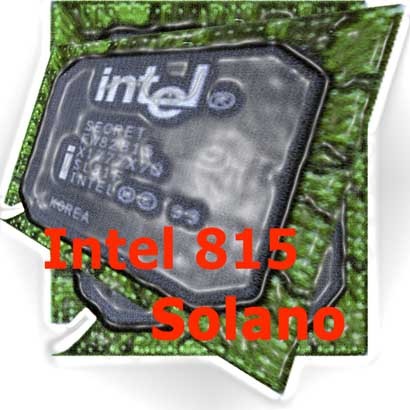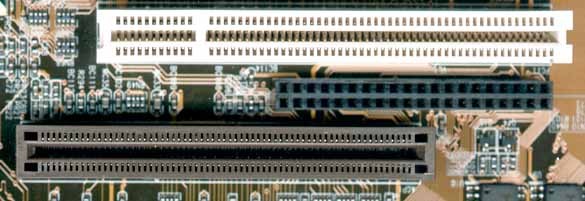Beefed Up BX? - Five Boards with 815/Solano Chipset
Introduction
There has been a new hand of cards dealt in the world of chipsets. With the introduction of 815/Solano, Intel has a component that supports SDRAM memory and all new features, for example, 133 MHz Front Side Bus or AGP 4x. The Intel 815 (code name "Solano") and the Intel 815E "Solano 2" are supposed to slowly substitute the established 440BX chipset. The latter has been very popular for more than two years. However, it is due to be discontinued soon. At least this is the product roadmap according to Intel, which does not exclude a late comeback of the Rambus chipsets such as 820 and 840. This only works under one assumption: To overcome some of the current problems with RDRAM and its disappointingly bad performance in today's applications, chipsets like the 820 and the Rambus memory itself must become much more affordable. Additionally, it would take quite a lot of subsidizing on Intel's side to convince every motherboard manufacturer to embrace this technology. For the user this means either he continues to bank on the 440BX that will be discontinued at the end of the third quarter of this year, or he switches to a board with the 815 chipset now. But, there is a fly in the ointment with the second scenario. Intel is planning to ship the 815 chipset in low quantities, thus most board manufacturers will initially favor the OEM business and produce few boards for the retail market. There's of course the alternative in shape of the VIA Apollo Pro133A chipset, which comes at a much better price point than Solano, but its performance can also not quite live up to the new competitor from Intel
For the following test we looked at five boards based on Intel's 815 chipset. All test participants are final products that will be available in retail stores soon. The only difference between the individual candidates is that the Abit SE6 and the MSI MS-6337 are equipped with the ICH2 chip (Solano 2), while the other three boards still feature the "old" ICH.
A Closer Look At The Five Test Participants
Here you see a connector for digital video output. Because there is no standard, every manufacturer designs his own connector. Apparently, the appropriate DVI compatible card will be available as an option.
The Abit SE6 and the MSI MS-6337 are equipped with the ICH2 chip, meaning both boards offer two Ultra-DMA/100 interfaces. However, we did not have the appropriate hard disks to test these new features, so we ran the tests as usual in Ultra-DMA/66 mode. To fully support Ultra-DMA/100, not only the chipset (Intel 815E), but also the BIOS and the connected hard disk must support this transfer mode. There are no changes for the IDE cable: The common cable with 80 pins for Ultra-DMA/66 may be used.
All boards possess AGP slots that can be equipped with an AIMM module (AGP Inline Memory Module) for the onboard graphics. Often these memory upgrade modules (8 MByte maximum) are disproportionably expensive (about $50), however, making the purchase hardly worth it. But there is an interesting point, too. These boards can operate Front Side Bus and the memory clock asynchronously and offer an interesting function for owners of Celeron CPUs. It is possible, for example, to run the Front Side Bus with the specified 66 MHz (all socketed versions of Celeron), while the memory clock is at 133 MHz - given the appropriate SDRAM memory. Individual boards offer other features: MSI, Chaintech and Abit come with 6 PCI slots, while the MSI is equipped with 4 DIMM slots. Nevertheless, on all boards the maximum memory upgrade is limited to 512 MByte.
Tracing The Shortcomings
During the test we encountered a few problems with the different keyboards we used. While the Cherry keyboard worked flawlessly with all boards, our Keytronic model malfunctioned on irregular intervals with the Chaintech and the Azza one. For example, after calling the DMI functions, just before the actual boot procedure, the keyboard did not react to entries anymore. In this case, less experienced users might blame this problem on setting the memory timings too progressively. However, compared to the first tests a few weeks ago, when we only had the engineering samples, the picture looks much more balanced: all boards were stable under Windows 98 SE.
Get Tom's Hardware's best news and in-depth reviews, straight to your inbox.

